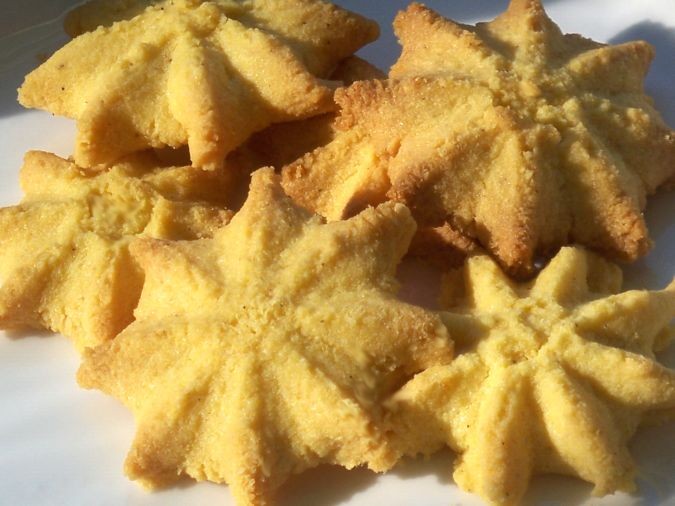Soft dinner rolls made with corn flour and flavored with lemon zest
 Bread Baking Day is a monthly blog event initiated by Zorra and hosted this time by Aparna of My Diverse Kitchen.This month’s theme is “small breads”.
Bread Baking Day is a monthly blog event initiated by Zorra and hosted this time by Aparna of My Diverse Kitchen.This month’s theme is “small breads”.
These corn flour rolls are soft and light, slightly sweet and wonderfully flavored by a good amount of lemon zest and a touch of butter which combine perfectly with the taste of corn. Corn flour is finer than cornmeal and provides a nice chewiness without making the texture gritty.
The recipe comes from an American collection of recipes published in 1918 and meant to provide people with ways to conserve precious resources such as wheat flour and sugar. Despite the economy of ingredients these rolls truly taste rich and wholesome, and are well worth trying.
From the original recipe by Amelia Doddridge
In: “Liberty Recipes”, 1918—USA
Ingredients
1/2 cup scalded milk
1 egg, well beaten
2 tbsp sugar
2 tbsp melted butter
1/4 tsp fine sea salt
zest of 1 (organic) lemon
1/2 cup (60 g) corn flour (I used Bob’s Red Mill brand)
1 tsp active dry yeast dissolved in 2 tbsp warm water
3/4 cup to 1-1/2 (105g to 210 g) cups bread flour (or as needed) (I used King Arthur bread flour)
Pour the scalded milk over the sugar and salt, mix well and set aside to cool. Once the milk mixture is lukewarm add 3/4 cup of bread flour and the dissolved yeast. Mix vigorously and let the sponge ferment,covered, until doubled.
When the sponge is light add the melted butter, egg, grated lemon rind and corn flour. Mix well at low speed then add just enough bread flour to make a dough that is very soft but well developed and just slightly tacky. Do not add too much flour or the rolls will turn out dry and heavy.
Lightly grease a bowl and place the dough to rise, covered, until doubled in bulk.
Preheat the oven to 375°F.
Gently transfer the risen dough onto a lightly greased surface and divide it in 12 equal pieces. Shape each into small round rolls (the dough is too soft to keep well any other shape more complex than rounds or ovals). Place each roll onto a rimless baking sheet and lightly brush with milk.
Let the rolls rise, covered, until doubled. Brush again with milk then with sharp kitchen scissors cut a decorative pattern on each roll.
Bake for about 20 minutes until nice and golden.
These rolls are great to eat either warm or cold. They can also be split and toasted to have with jam or marmalade, and can be frozen once cooled.
—
—













